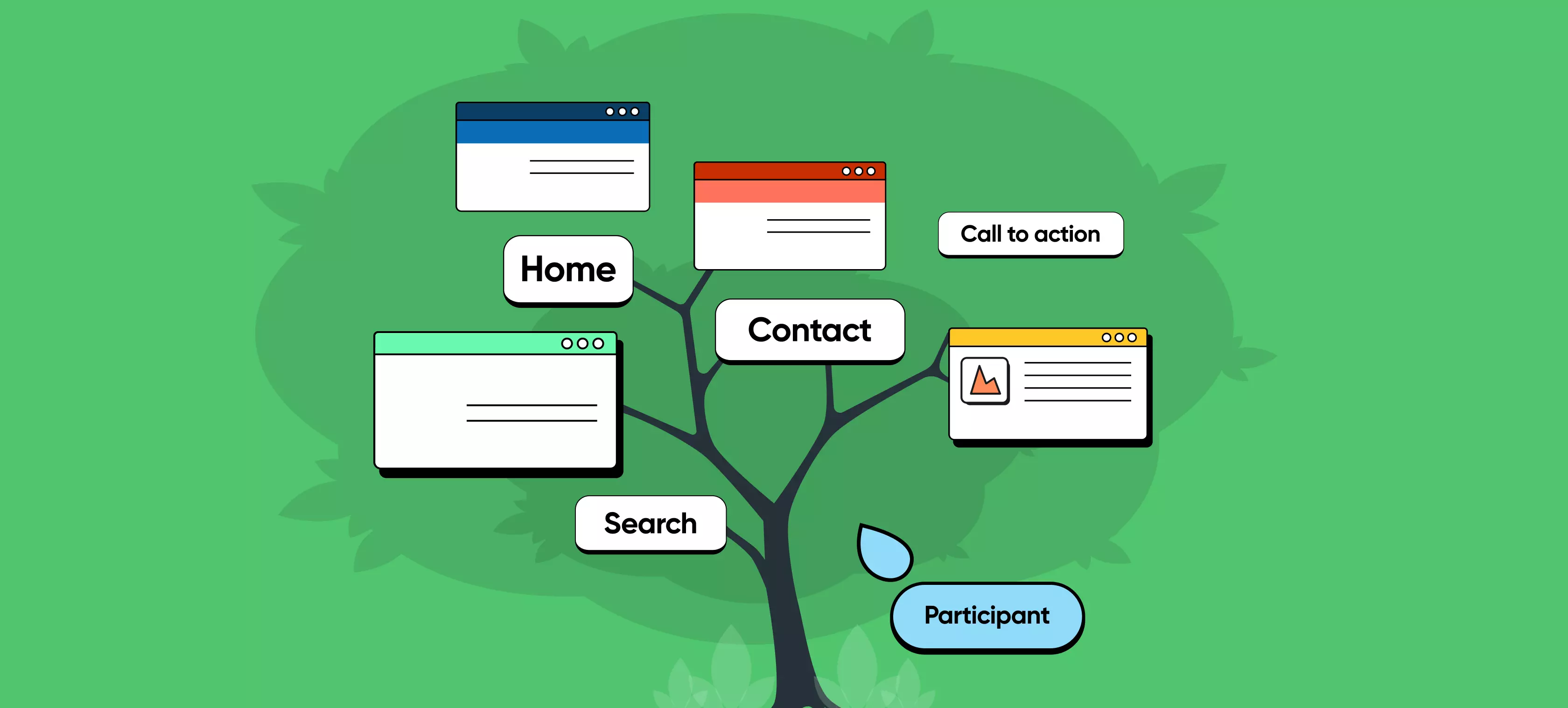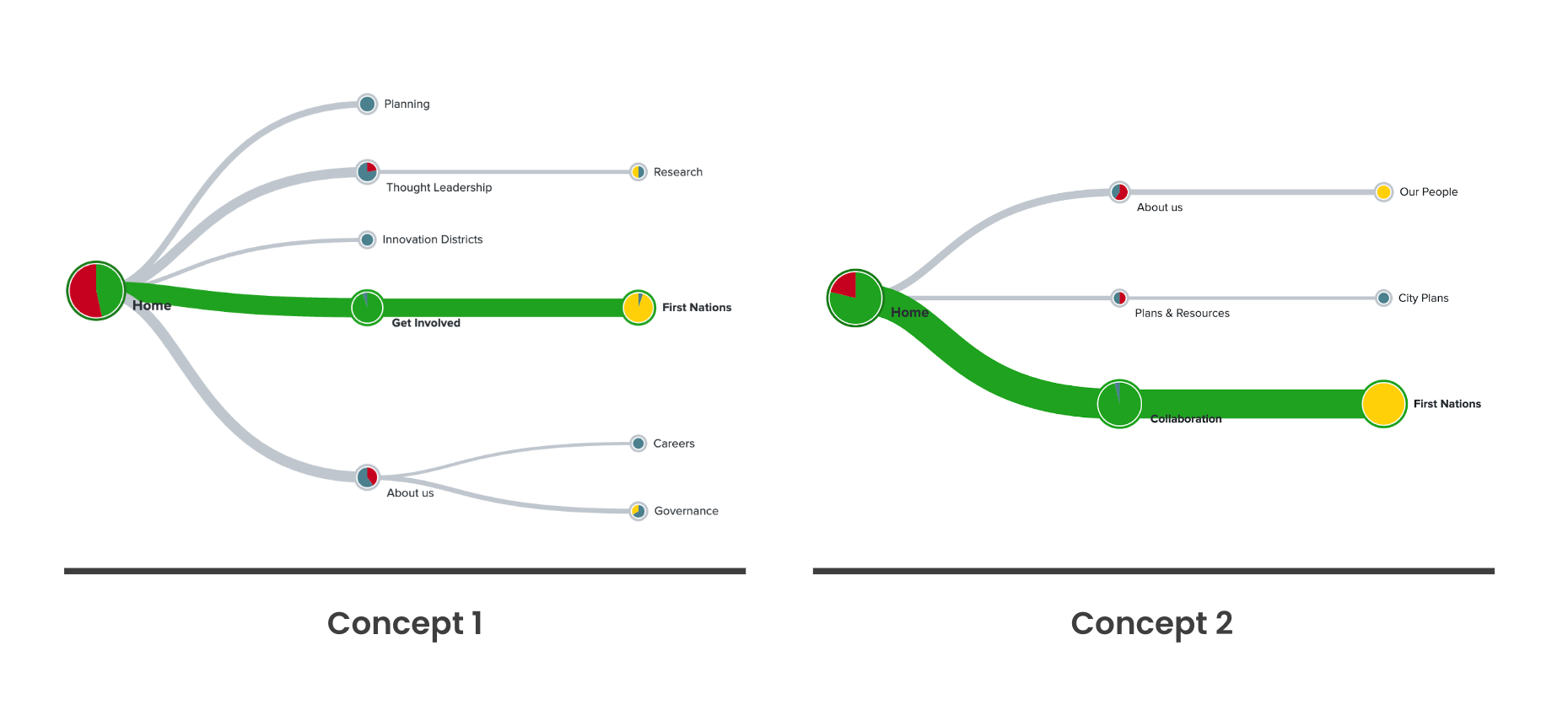Why do we tree test?

It is critical that information on your website is findable. Users should be able to navigate the menu and locate relevant information in a matter of seconds.
And this is where tree testing becomes valuable.
What is a tree test?
Well, every website has what we call an information architecture (IA). This refers to the underlying structure and organisation of content and pages on the website. Website users will
see the navigation, which is how the user interface represents the IA. This is what our users use to traverse the IA and locate pages.
We call it a tree test because the information architecture is structured like a tree!

Tree testing is focused on isolating this IA and testing this with users of the website. We test using a text only version website structure and ask users where they would find information. This activity usually takes place in the early stages of a website development project.
We want to understand:
- Is the tree straightforward to navigate?
- Are the groupings of pages (or labels) logical?
- Do the names of the labels make sense to users?
How do we run them at Digital Garden?
At Digital Garden, we are strong advocates for tree testing and pride ourselves on following best practice with our approach. This includes:
- Test with at least 30 participants - this is typically enough to show trends in the data.
- Include no more than 10 tasks - this can cover most of the IA and prevents us from boring our participants!
- Write specific, relevant tasks - These should match the main pathways that user groups would take on the website. A task we used for a recent tree test for NBRS, an architecture firm, was: “You would like to learn more about NBRS’ approach to designing school facilities. Where would you go to find this information?”
- Randomise task order - This prevents later tasks having the advantage of participants already being familiar with the IA and where to find specific items.

The web-based platform Optimal Workshop allows us to set up, manage and run our tree tests - unmoderated.
What is the value of tree testing?
Like any great UX activity, tree testing can provide a clearer picture of how our users think. It helps us understand where users expect to find information and what labels make sense to them.
More specifically, tree testing provides the following benefits:
- It’s efficient and unmoderated - Sessions are short and participants have the convenience to complete the test in their own time, without the pressure of something closely observing them.
- It evaluates our labels for us - We can use quantitative results to properly evaluate how well the labels are understood by participants.
- It’s useful at any time - Whether your website has been live for years or is in the process of launching, you are still able to gain valuable insights from testing.
How this helps our clients
At Digital Garden, we have completed successful tree tests for clients such as: Tandem, Greater Cities Commission (GCC), NBRS, AUSTRAC, NABERS, City of Kingston Council, AFMA, Glaucoma Australia and more.
For GCC - we tree tested two separate IA concepts. Concept 1 made minor changes to the existing IA while Concept 2 was more experimental. This comparative testing allowed us to confirm which concept users were able to navigate better.
While Concept 1 proved more successful, there were specific areas we could use to capitalise on Concept 2’s strength. In one task, we asked participants where they would go to learn about GCC’s engagement with First Nations peoples - ‘Get involved’ in Concept 1 or ‘Collaboration’ in Concept 2.

Comparing two pie trees (generated from Optimal Workshop) which illustrate the pathways taken by participants - and the amount of traffic in each.
More participants selected ‘Collaboration’ as their answer, suggesting this label was more appropriate to house this content. This became part of the set of recommendations we presented to the client, and formed the final IA concept for this project.
We are always eager to perform tree testing because of the valuable outcomes for our clients - a tested, usable and logical website structure where key information is always findable.
